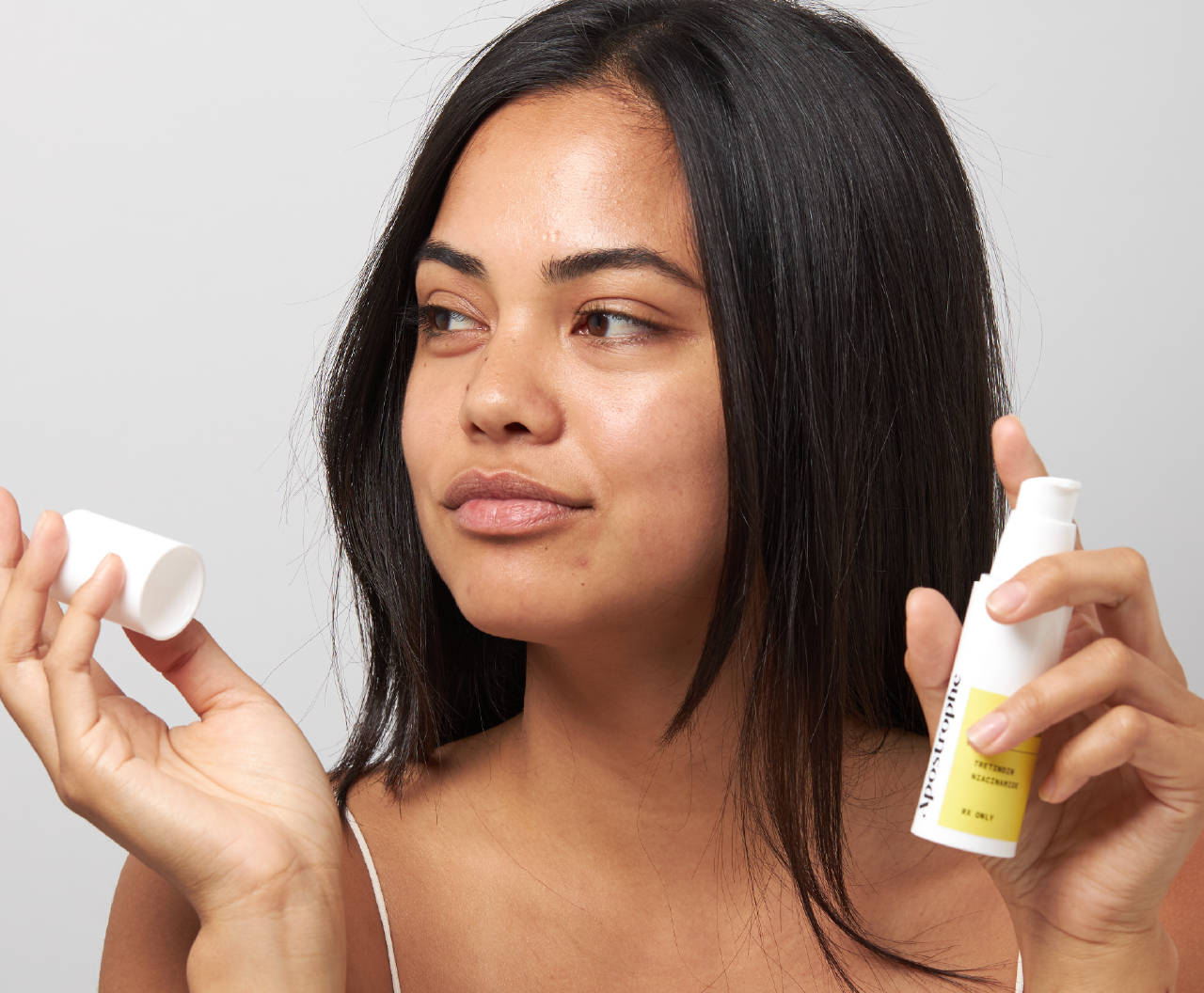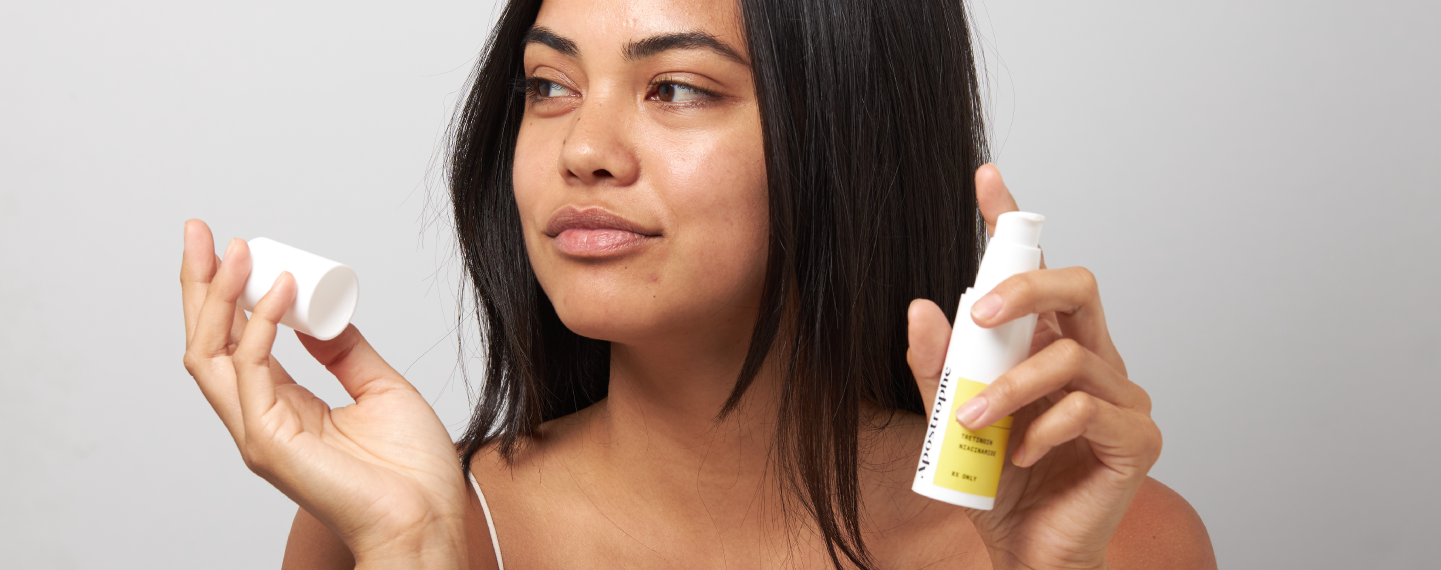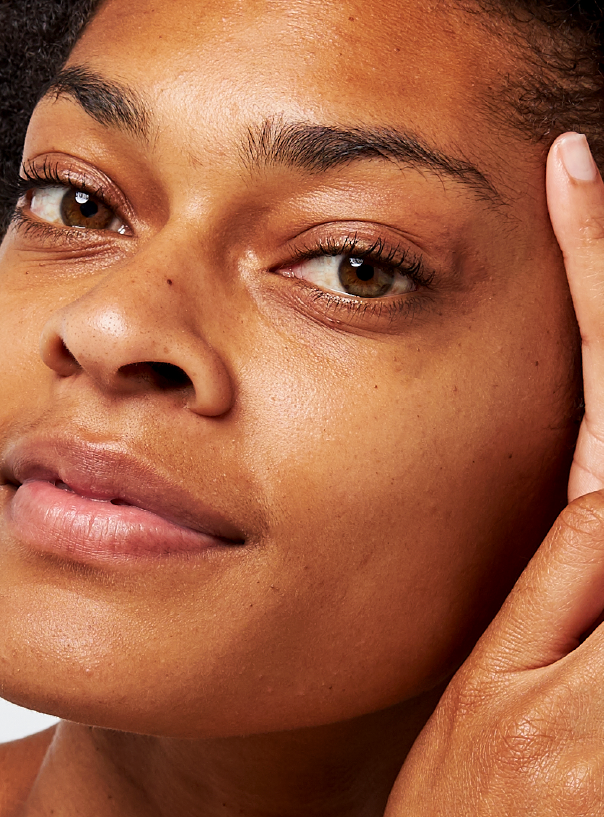General
What Tretinoin Strength is Best For Acne?


SHARE
General
What Tretinoin Strength is Best For Acne?
Medically reviewed by Aimee Paik, MD
Written by Apostrophe Team
Last updated 7/5/2022
Perhaps you’ve heard of topical tretinoin. It’s a prescription cream that dermatologists often prescribe to treat acne, photodamaged skin, or signs of aging. In fact, it’s considered by many derms to be the gold standard in treating tough acne.
The reason? It works.
Even better, tretinoin comes in a few different concentrations, so you can tailor it to your specific skin needs.
If you’re interested in trying this acne medication, you’ll have to connect with a board-certified dermatologist or other healthcare provider. In the meantime, learn a bit more about the medication - including which strength is best for acne.
A primer on acne
First, you should know that acne vulgaris (you probably know it simply as “acne”) is a very common skin condition that anyone can experience - and at any age. It develops when your pores become clogged with a mixture of sebum and dead skin cells.
Under normal circumstances, sebum is actually good for your skin health. It’s created by your sebaceous glands to lubricate your skin and hair. Plus, it forms a barrier on your skin to protect it from bacteria and other environmental factors.
But if too much sebum is produced, it can block pores. Add some dead skin cells to the mix and you have acne. Add some bacteria to the mix and you get biiiig trouble in the form of moderate to severe acne - pustules, papules, cysts and all that fun stuff.
What kicks your body’s sebum production into overdrive? Here are a few of the most common culprits:
Hormonal imbalances, like the ones that occur during adolescence or your period.
Genetics can also factor in. If family members are prone to oily skin or acne-prone skin, you may also be.
Lifestyle choices like washing your face too often or not cleansing your skin after working out can also lead to problems.
And as we mentioned above, dead skin cells sometimes don’t shed properly and block pore openings, which can fill up with sebum. Add some bacteria and inflammation to the mix and you get pustules, papules and cysts. Your body sheds dead skin cells every 40 to 56 days to renew and replace your skin.
A little background on tretinoin
Tretinoin is part of a class of medications called retinoids and is a specific type of topical medication known to diminish acne by speeding up your skin’s natural cell turnover rate.
Tretinoin is most commonly used to treat acne, including mild acne, moderate acne, severe acne, cystic acne, and beyond.
Topical retinoids (such as tretinoin) are also sometimes used to treat sun damage and photodamaged skin. In addition to this, it can be applied to address fine lines, wrinkles, and dark spots.
Tretinoin and Acne Treatment
Research has shown that tretinoin can reduce inflammatory and noninflammatory acne lesions, unclog pores and even lessen the appearance of acne scars (this is because it may help with collagen production).
Sometimes, derms will combine tretinoin with other acne-fighting medications like salicylic acid or oral antibiotics.
Like any medication, there are some common side effects associated with topical tretinoin. They include:
Stinging
Skin irritation
Red or scaling skin
Swelling
Dry skin
Peeling
If you have sensitive skin to start with, you may be more likely to experience adverse effects like skin irritation and redness. If you experience severe irritation or any other extreme adverse effects, contact your dermatology provider immediately.
What strength of tretinoin is best for acne?
Tretinoin topical cream is available in a few different strengths - including .005%, .025%, .05% and .1%.
A 1991 study found that .05% tretinoin cream lead to more of an improvement in wrinkles and hyperpigmentation than a weaker .01% tretinoin cream and a non-therapeutic placebo. It’s worth noting this study didn’t touch on acne.
Another study, this one published in 2017, 12 weeks of tretinoin therapy in .1% and .025% strength reduced small acne blemishes by 80% and 35% respectively.
But just because stronger concentrations of tretinoin may be more effective, it doesn’t mean that’s what you should use. Higher tretinoin concentrations may also lead to more side effects.
A study done in 1995 found that while .1% and .025% tretinoin produced similar results in terms of improving photoaging, the stronger form has significantly more side effects - like redness and peeling.
Generally, your dermatology provider will start with a lower strength prescription and gradually increase the prescription as your skin gets acclimated to tretinoin. However, that’s a conversation better reserved for the experts.
Regardless of the strength of tretinoin you use, you should be aware of something often referred to as the “Tretinoin Purge.” When you first start using this medication, you might experience irritation and more breakouts during the first few weeks of use. These symptoms usually subside over time, as your skin gets used to the medication.
Trying tretinoin
Wondering if tretinoin may be the answer to your acne problems? The best way to determine that is through a consultation with a board-certified dermatologist or other healthcare provider.
During your consultation, your dermatology provider will assess whether tretinoin is the best prescription acne medication for your acne - and, if so, what strength you may benefit from.
Regardless of what medication may be best for you, talking to a pro is the first step to having your happiest, healthiest skin.
Sources:
Acne (2012). Retrieved from https://www.womenshealth.gov/a-z-topics/acne
Physiology, Sebaceous Glands, (2021). Stat Pearls. Retrieved from https://www.ncbi.nlm.nih.gov/books/NBK499819/
Makrantonaki, E, Ganceviciene, Zouboulis, C (2011, Jan-March). An update on the role of the sebaceous gland in the pathogenesis of acne. Dermato Endocrinology. 3(1), 41-49. Retrieved from https://www.ncbi.nlm.nih.gov/pmc/articles/PMC3051853/
Koster, M.I. (2009, July). Making an epidermis. Annals of the New York Academy of Sciences. 1170, 7-10. Retrieved from https://www.ncbi.nlm.nih.gov/pmc/articles/PMC2861991/
Retinoids. American Osteopathic College of Dermatology. Retrieved from https://www.aocd.org/page/Retinoidstopical
Tretinoin Topical. Medline Plus. Retrieved from https://medlineplus.gov/druginfo/meds/a682437.html
Leyden, J., Stein-Gold, L., Weiss, J., (2017). Why Topical Retinoids Are Mainstay for Therapy for Acne. Dermatology and Therapy. Retrieved from https://www.ncbi.nlm.nih.gov/pmc/articles/PMC5574737/
Khemani, U., Khopkar, U., Nayak. C., (2016). A comparison study of the clinical efficacy and safety of topical adapalene gel (0.1%) and tretinoin cream (0.025%) in the treatment of acne vulgaris. International Journal of Basic and Clinical Pharmacology. Retrieved from https://www.ijbcp.com/index.php/ijbcp/article/view/311
Weinstein, GD., Nigra, TP, Pochi, PE, et al., (1991). Topical tretinoin treatment of photodamaged skin. Arch Dermatol. Retrieved from https://pubmed.ncbi.nlm.nih.gov/2024983/
Griffiths, CE., Ellis, CN., Kim, KJ., et al., (1995). Two concentrations of topical tretinoin (retinoic acid) cause similar improvement of photoaging but different degrees of irritation. A double-blind, vehicle-controlled comparison of 0.1% and 0.025% tretinoin creams. Arch Dermatol. Retrieved from https://pubmed.ncbi.nlm.nih.gov/7544967/
Shop this post

Tretinoin
Like what you just read? Sign up for our email list to get the scoop on skincare science delivered straight to your inbox.

General
What is milia?
What is milia? Today, we’re jumping into one type of bump that you may have heard about most commonly in infants — milia.
Read More
General
Best moisturizer for acne-prone skin
If you have combination acne-prone skin, figuring out which moisturizer is best for your skin might be tough. In this guide, we break down the best moisturizer for combination, acne-prone skin.
Read More
General
How to build a face care routine
As you get into skincare, it might seem overwhelming, especially trying to figure out the order you're supposed to apply products in. Below, we detail how to build a face care routine for your skin!
Read More
